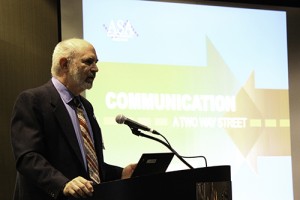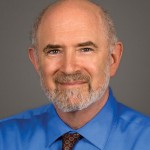Conference on Statistical Practice: A Place for and About Communication
Along with more than 400 others, I attended the 4th annual Conference on Statistical Practice (CSP) in New Orleans in February. Having attended all the CSPs, I can see how it is evolving and how well it serves elements of our membership. This time around, I was invited to give the keynote address, and I would like to share some of the ideas I presented.
First, here’s a bit of history for those not familiar with the conference. The idea for the CSP came out of an initiative by former ASA president Sally Morton. She had the thought that there were other conferences that could both be of interest to members and possible revenue sources. She set up a working group chaired by Maura Stokes and Nat Schenker (who gave the keynote address at CSP last year). They developed the details, and the CSP organizing committee was formed to bring the idea to fruition.
The CSP is a small, more personal conference, held in a single hotel. It is easy for attendees to work out logistics and get from one session to another quickly. In the wrap-up sessions held at the end of last year’s and this year’s conferences, attendees expressed strong support for keeping the conference both small and personal.
Another important component of both this and last year’s conferences was a mentoring program organized by Eric Vance. At both conferences, several dozen attendees—close to 10% of the participants—were paired and met each other by phone or email prior to coming to the conference. They were encouraged to meet at the opening mixer. This opportunity might well have increased their feeling of being an important part of the conference.

ASA President David Morganstein presents “Communication: A Two-Way Street,” during the keynote address February 20 at the Conference on Statistical Practice in New Orleans, Louisiana.
The CSP has the following four simultaneous tracks:
- Communication, Impact, and Career Development
- Data Modeling and Analysis
- Big Data Prediction and Analytics
- Software, Programming, and Graphics
The first of these tracks includes papers and short courses on personal skills development. Short courses in communication and leadership are an important addition to services the ASA provides, having been recognized as a valuable element in career development by ASA leadership (see “Career Success Training for Statisticians: A Progress Update”). Effective communication and leadership skills are particularly important to statisticians in the early years of their careers as they are seeking opportunities to expand their role and the value they bring to their work.
My keynote address was titled “Communication: A Two-Way Street,” and I chose it to emphasize the importance of the Communication, Impact, and Career Development track to our individual careers and the success of our profession. To do our work well, we need to receive—as well as transmit, listen, understand, and gather—data before we try to solve a problem and explain a proposed solution to our colleagues.
Well-thought-out, clear, bi-directional communications may be especially important in our profession given recent changes in our demographics. We have and are likely to continue to grow rapidly (see “Growing Numbers of Stats Degrees”). There is a notably large proportion of statisticians who are women, much more than any other STEM field (see “Women Flocking to Statistics, the Newly Hot, High-Tech Field of Data Science”). Members of our association come from 90 countries, and one in nine of us resides outside the United States. For at least the past decade, more than 55% of statistics graduate students in the United States have been nonresident aliens, many of whom are learning and will be practicing their profession in a second language. We are a diverse, multicultural community. This environment presents communication challenges and, at the same time, offers opportunities to the ASA to serve our current members and welcome many new ones.
In the keynote presentation, I expressed a concern and used the story of the Tower of Babel as an allegory. In addition to being so diverse culturally, the ASA is the Big Tent for Statistics and is welcoming to many special interests. This raises the potential for communication confusion. Each statistical specialty may use unique terms not understood by others within our profession or by those we want to communicate with, like journalists, who are outside our profession. We may even use the same term to mean very different things. For example, at the CSP, I attended a seminar about Big Data in which the presenter asked the attendees, “Do you know what ‘scoring’ means?” It turns out he meant using a model developed with training data to make an estimate from new data not included in the modeling step, not the likelihood score function I was familiar with. How can we avoid becoming a Tower of Babel?
Jargon can be a useful shorthand between those who understand its meaning. If we are trying to be understood by journalists and the public at large, however, our specialized terminology can become an impediment. For decades, we have written papers and articles meant for the public that include terms such as “type I errors” or “the size and power of a test.” If you are not a student of statistics, the meaning of these terms may not be immediately obvious. A phrase such as “the error of over-reaction” or “the error is missed opportunity” might be much easier for nonstatisticians to learn and remember!
The importance of the two-way aspect of communication has been pointed out by many. Steven Covey’s widely read The 7 Habits of Highly Effective People lists Habit #5 as “Seek first to understand, then be understood.” He goes on to suggest that “communication is the most important skill in life.”
In his book Out of the Crisis, W. Edwards Deming noted two points for management that are particularly relevant to our own profession: #8, “Drive out fear,” and #9, “Break down barriers between departments.” Both points address the importance of clear, open channels of communication between people working together to ensure accurate data are offered for use in making decisions.
In his 2000 Joint Statistical Meetings paper, former ASA president Richard Scheaffer wrote, “Good communications skills are important for prospective statisticians, in order to qualify for many positions in industry, where the need to explain technical matters to laymen is common.” There are many good reasons to be aware of the quality of communication that is occurring—or not occurring!
We are surrounded by tools—both traditional and newer, high tech—we can use to make communication more effective … if we use them! Agendas, for example, can be sent before meetings to help attendees be prepared. Meeting minutes can be sent afterward to highlight decisions made and identify who will do what and by when. To help ensure reports include the most important topics in the right order, start with an outline agreed to by your co-authors or client. In this increasingly distributed workforce and teaching environment, collaboration tools are available at our fingertips to bring people from around the globe into a virtual meeting or classroom. Google Hangout is just one tool. Is there life after PowerPoint, better tools to convey ideas? Prezi, PreZentit, Haiku Deck, SlideDog, and SlideRocket are just a few presentation software options to consider. Prezi was used during the mentoring panel discussion at the CSP.
I’ll conclude my comments about the CSP by introducing Emmanuel Thompson. We met in New Orleans through the ASA mentoring program. Emmanuel presented a poster session titled, “Economic Impact of Maternal Mortality in Africa: A Panel Data Approach.” He completed his undergraduate work in statistics from the University of Cape Coast in Ghana and recently earned a PhD in statistics from the University of Calgary. He’s now teaching statistics and probabilities at Southeast Missouri State University in a community he and his wife, Sandra, recently moved to. Emmanuel joined the mentoring program to make professional connections in our association since there are only a few statisticians in his math department. I send a special thanks to him and Sandra for dropping everything to volunteer their help to a group of us who were preparing materials for our early morning session the next day. It was a repetitive and routine task, but we all felt a sense of connection working together. My appreciation to both of you for the help, Emmanuel!


















